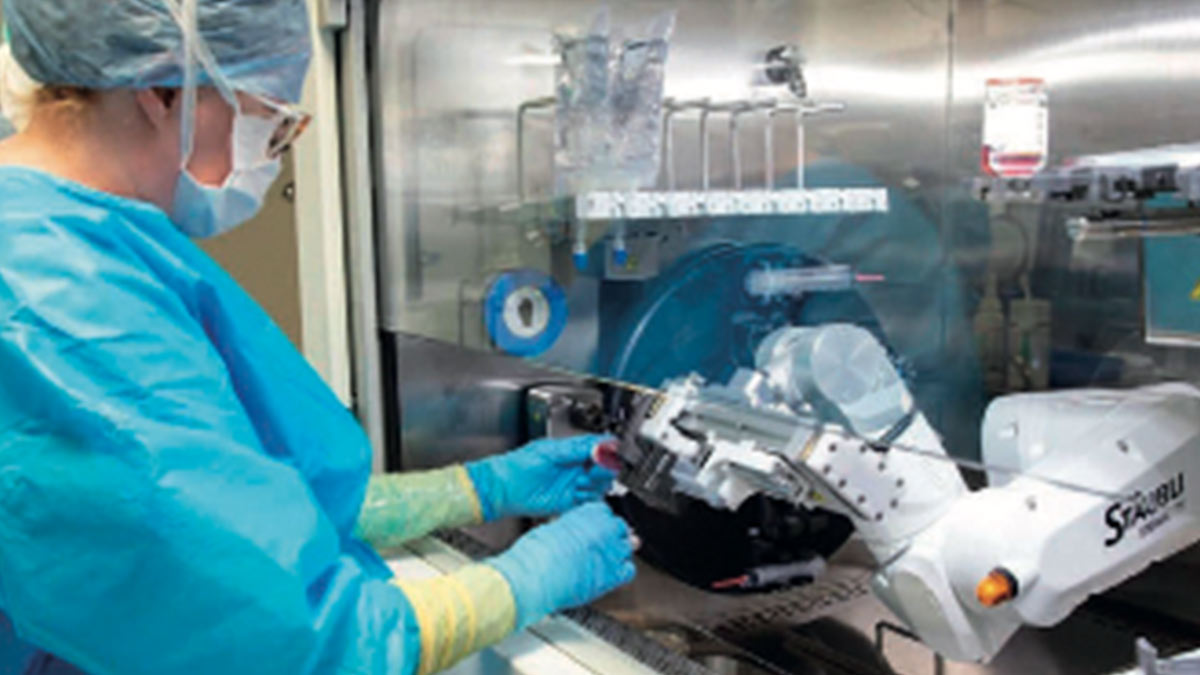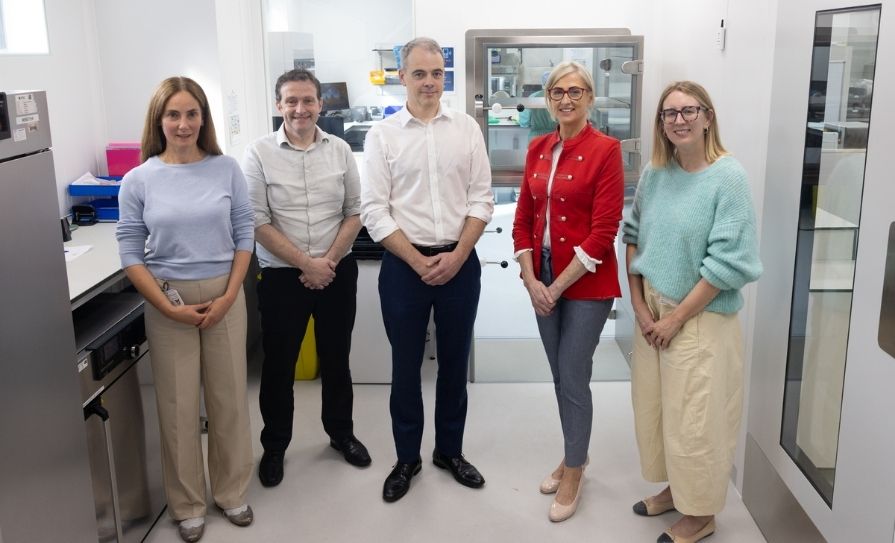Trinity St James’s Cancer Institute pioneers ground-breaking robotic system to make cytotoxic chemotherapy medications
The Trinity St James’s Cancer Institute at St James’s Hospital in Dublin has become the first hospital in the UK or Ireland to introduce a compounding robot to produce cytotoxic chemotherapy drugs for cancer patients. As part of the evolving robotic programme in the hospital, this new initiative has the potential to supply chemotherapy products more efficiently and safely, increasing productivity and leading to a better experience for cancer patients at the hospital, said St James’s.
Chemotherapy is traditionally produced using a highly manual process carried out in pharmacy departments. Overseen by pharmacists and pharmacy technicians, it is physically intensive, involving measurement of doses, reconstitution of commercially-sourced drugs, and dilution into patient specific doses. Therefore, there is a risk of human error and a need for high levels of quality assurances and verifications. Staff globally often report repetitive strain injuries due to the labour intensity of production, as well as burnout.
The Aseptic Compounding Unit at St James’s Hospital is the busiest in the country, producing 30,000 products annually. With cancer levels rising alongside a growing and ageing population, this demand will rise in coming years. Funds for the new robot were raised by the St James’s Hospital Foundation.
Free-up pharmacists’ time
Gail Melanophy, Director of Pharmacy at St James’s Hospital, said: “This is a major step forward for our staff and our cancer patients at the hospital.We aim to produce up to 50 per cent of the oncology/haematology day ward’s chemotherapy needs within weeks of introduction and we hope this will significantly increase when at full capacity, including inpatient needs. This will free-up time for our pharmacists to produce other products that the robot does not make and ensure that our valued patients never have to wait for their treatments.”
The first patient received their treatment made by the new robot at the Trinity St James’s Cancer Institute on 11 April) on the hospital campus. Ms Liz Hogan from Ratoath, Co Meath, is being treated for cervical cancer at the hospital and was infused with a customised dose of the chemotherapy produced by the robot.
She commented: “I noticed no difference at all when I received my dose of chemotherapy today at St James’s Hospital, but I am reassured by the wonderful staff here who have told me that the new robot will help to ensure the chemo for all the cancer patients like me will be of very high quality.”
Thirteen of the most commonly-used cytotoxic chemotherapy drugs used at St James’s Hospital have been initially selected to be produced by the robot. Trials at the hospital have demonstrated that the advance preparation of the drugs is readily achievable, meaning they are available in the clinics when patients arrive for their sessions.
Repetitive strain injuries
For the pharmacy staff, the use of the robot protects them from repetitive strain injuries commonly associated with this type of manual process, as well as from exposure to hazardous drugs used in the compounding of chemotherapy. Patients can be assured of the quality of the chemotherapy produced due to the environment in which the robot is housed, as well as the flexibility to use the range and scope of products previously produced in the pharmacy. There are also potential cost savings to be realised, as the robot can store partially-used drugs for use in the production of subsequent doses, thus optimising the use of expensive drugs.
Ms Aisling Nolan, Director of Development at the St James’s Hospital Foundation, said: “I am delighted that the hard work of the Foundation supporters, from patients to families to our own staff, has paid off with the installation and use of this new robot. Cancer care is a core service at St James’s Hospital and this robot will help our cancer patients and the staff who care for them every day.”
MDT
The project was made possible due to a highly collaborative multidisciplinary team including pharmacists, technicians, engineers, electricians and ICT staff, along with commercial partners to plan, implement and test the technology.
CEO of St James’s Hospital Prof Mary Day said: “The Trinity St James’s Cancer Institute aspires to being a comprehensive cancer centre where patient care, research, clinical trials and cutting-edge treatments combine to lead to better patient outcomes and experiences.
“Being the first hospital in the UK or Ireland to use this new robot to make chemotherapy drugs is another example of how we are constantly striving to find new and better ways to serve our patients and assist our staff.”







